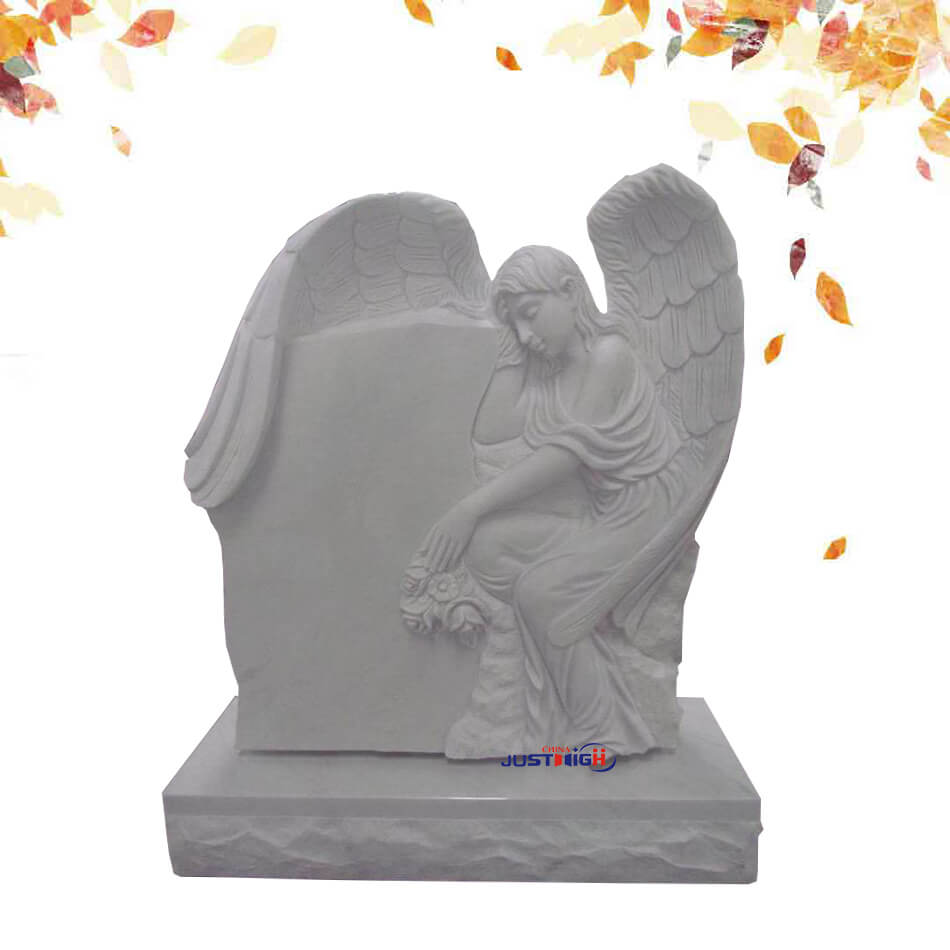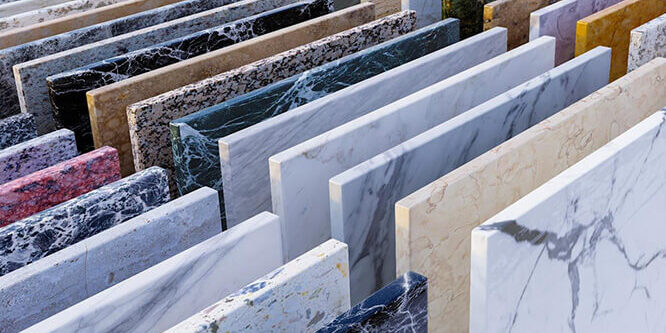Walking through a cemetery, you notice headstones that look different from each other. Some shine in the sunlight. Others have tiny sparkles. Some feel smooth. Others feel bumpy. Learning to tell marble from granite headstones is easier than you think.
Understanding These Two Stones
Marble and granite both come from deep in the earth, but they form in different ways. Heat and pressure change limestone into marble over millions of years. Granite forms when melted rock cools down under the ground.
Rebecca Davis, who runs Davis Monument Company in Ohio, tells families: “These stones are like fingerprints. No two pieces are exacty the same. Each one has its own beauty.”
What Your Eyes Can Tell You
Color Differences
Marble headstones show fewer colors. Most are white, light gray, or cream colored. The patterns flow like water or look like clouds in the sky. Some have thin lines that run through the stone.
Granite headstones mix many colors together. You see black dots, white crystals, pink spots, and gray pieces all in one stone. These create a speckled look that makes granite easy to spot.
How the Surface Looks
Touch both types of stones with your hand. Marble feels smooth and cool against your skin. The surface is even and polished. Granite feels rougher becuase of all the crystals that make it up.

Tom Williams has carved headstones for 25 yrs. He says: “When ppl touch marble, they think of kitchen counters. When they touch granite, they feel the texture right away. It’s like the difference between glass and sandpaper.”
The Simple Penny Test
This test works on any headstone. Find a small area where no one will notice. Take a penny and scratch it against the stone with light pressure.
- Marble: The penny leaves a mark
- Granite: The penny makes no mark
This happens because marble is softer than granite. Scientists measure stone hardness using numbers. Marble scores 3-4 on this scale. Granite scores 6-7, making it much harder.
Age Tells the Story
Marble Headstones and Time
Old marble headstones show their age. Rain with acid in it eats away at marble over time. Letters become hard to read. The surface gets rough and pitted. Many marble stones from the 1800s look worn down.
Professor James Miller studied headstones in Pennsylvania cemeteries. He found that 75% of marble headstones over 80 years old had damage from weather. “The stone is beautiful, but it doesn’t fight the elements well,” he explains.
Granite Headstones Stay Strong
Granite headstones keep looking new for a long time. Stones from the 1920s still have sharp letters and smooth surfaces. Weather doesn’t hurt granite the same way it hurts marble.
Mary Chen, who maintains Riverside Cemetery, shares: “I can spot the old granite stones becuase they still look fresh. The marble ones need more work to keep them nice.”

Granite headstone
Reading Headstone Shortcuts
Headstones use short forms of words to save space:
- DOD (Date of Death)
- DOB (Date of Birth)
- RIP (Rest in Peace)
- approx. (aproximately)
- inc. (including)
- info (information)
- temp (temperature)
- max (maximum)
- vs. (versus)
- etc. (and so forth)
Facts About Headstone History
Before 1900, most headstones came from marble, slate, or sandstone quarries. Granite became the top choice after 1920 because it lasted longer and cost less to maintain.
The biggest granite quarry in America sits in Barre, Vermont. This quarry has provided stone for over 100,000 headstones since 1885. Workers there cut granite blocks that weigh up to 50 tons.
Georgia marble quarries produced the white stone that built the Lincoln Memorial. Many headstones from the same quarries marked graves across the country.
What the Experts Say
David Rodriguez works at Peaceful Rest Cemetery in California. He sees hundreds of headstones every week: “The granite ones just need a wash with soap and water. The marble stones need special care. Some are so old that cleaning them too hard can cause more damage.”
Jennifer Adams helps families pick headstones at Adams Memorials. She explains: “Some families want the classic white marble look. Others choose granite because their children and grandchildren won’t have to worry about upkeep.”
Modern Headstone Choices
Today, granite makes up about 95% of all new headstones. Families choose granite because it:
- Lasts for hundreds of years
- Comes in many colors
- Costs less to care for
- Keeps letters sharp and clear
- Resists all types of weather
Some families still pick marble because they love its timeless beauty and smooth texture.

Marble tombstone
Quick Identification Guide
Use these steps to identify any headstone:
Step 1: Look at the colors. Few colors usualy mean marble. Many mixed colors mean granite.
Step 2: Touch the surface. Smooth means marble. Rough means granite.
Step 3: Check the age. Old stones that look worn are often marble. Old stones that look new are often granite.
Step 4: Try the penny test on a hidden spot.
Step 5: Look for crystal sparkles. These always mean granite.
Why This Matters
Knowing the difference between marble and granite headstones helps you understand cemetery history. Each stone choice tells you something about the family who picked it and the time when they made that choice.
When you visit cemeteries, you can appreciate the skill that went into making each headstone. You can understand why some stones have lasted better than others. Both marble and granite have their place in honoring the people we remember.
Whether you’re tracing your family tree or just curious about the stones around you, these tips will help you identify what you’re seeing. Every headstone has a story, and now you know how to read the first chapter.







